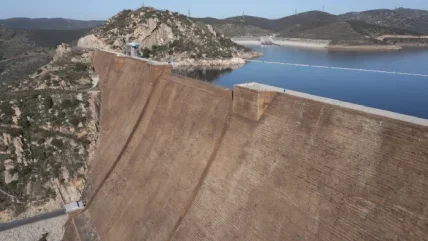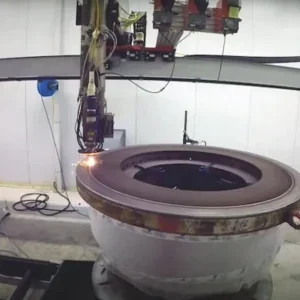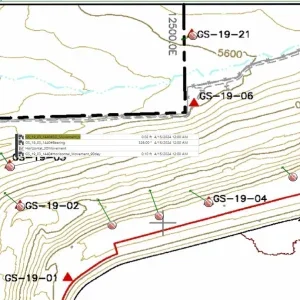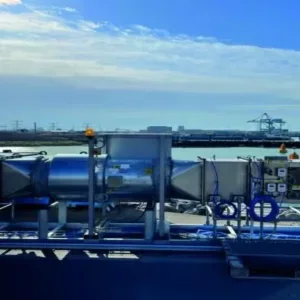
The San Vicente Dam Raise Project has been called a massive feat of engineering which was recently awarded with ICOLD’s International Milestone Award for Roller Compacted Concrete Dams.
Located near San Diego in California, the tallest concrete dam raise in the US is also the tallest dam extension built using RCC in the world. More importantly, the project has been able to secure a safe and reliable supply of drinking water for the 3.1 million people living in the 3600km2 region.
For decades the San Diego County Water Authority kept the water flowing by importing up to 80% of water supply from over 600km away in Northern California and from the Colorado River, but the region was at high risk of being cut off if natural disasters such as a major earthquake or drought interrupted imported supplies.
Completed in 2014, the ambitious dam raise initiative elevated the San Vicente Dam by 35.7m and it now stands at 102.7m tall. The expansion more than doubled the San Vicente Reservoir’s capacity, contributing an additional 152,000-acre feet of water storage – ample to sustain over 450,000 households for an entire year. While employing RCC helped to streamline the construction process, resulting in significant time and cost savings, further fortifying the structure to withstand a 7.5 magnitude earthquake.
“This award is a reminder that the San Diego region has a long history of strategic investments to protect our most important natural resource,” Water Authority Board Chair, Mel Katz, expressed pride in the recognition. “The San Vicente Dam Raise was a landmark project and one that inspires us as we seek solutions to current and future challenges,” he added.
Owned and operated by the City of San Diego since its construction in 1943, the expanded reservoir’s capacity is shared between the city and the Water Authority. Both entities also jointly bear the operational costs of the reservoir.
“Raising the San Vicente Dam was a massive feat of engineering,” said Water Authority Engineering Director Neena Kuzmich. “More importantly, it was the final major element of the Water Authority’s US$1.5 billion Emergency Storage Project, a system of reservoirs, pipelines and pumping stations designed to secure a six-month supply of drinking water for the San Diego region in case a natural disaster interrupts imported water deliveries.”
Commencing in 2009, preparations for the dam expansion involved utilising RCC as a fundamental design element and the expedited construction timeline while meeting all technical requirements.
Beyond robust design and Innovative construction methods, expanding San Vicente had many advantages over building a new dam. Not only was it less expensive but carried out in a way to reduce environmental and social impacts. Nearly all the concrete for the project was produced on site mining rocks from the hillsides around the reservoir to produce an aggregate, while a mix plant and conveyor belt system were also set up on the premises to carry RCC to the work site. These measures reduced project traffic by avoiding 100,000 delivery truck trips through the local community.
Extensive and early public outreach also ensured that local residents and business owners were well informed about the project. Multiple community meetings and feedback opportunities supplied valuable comments that were incorporated into the design. For instance, at the community’s request, the downstream surface of the raised dam was darkened with a varnish stain that minimised the reflection and brightness of the new structure, helping it blend into the surrounding desert geology. Other direct benefits for the local community were new recreational facilities including an expanded marina boat ramp and launch dock.
Significant public involvement in the open project planning process, plus successful cooperation with local water agencies and the city of San Diego, led the United States Society on Dams to use the dam as a model to support others when constructing a dam in today’s regulatory environment.
This article first appeared in International Water Power magazine.






